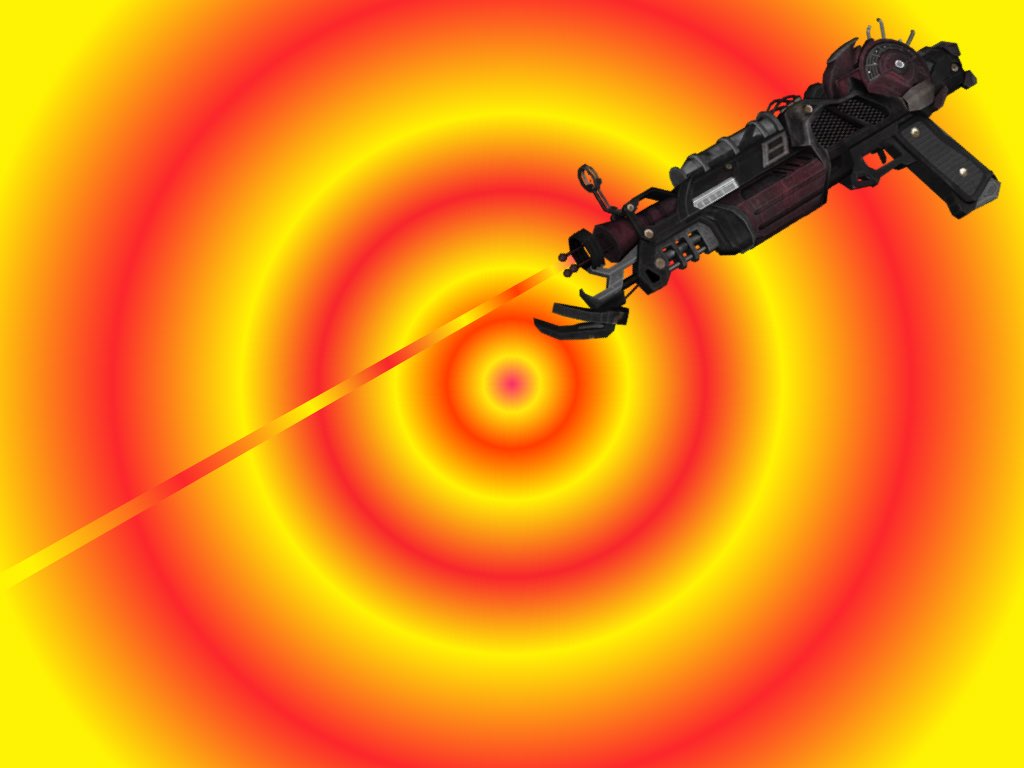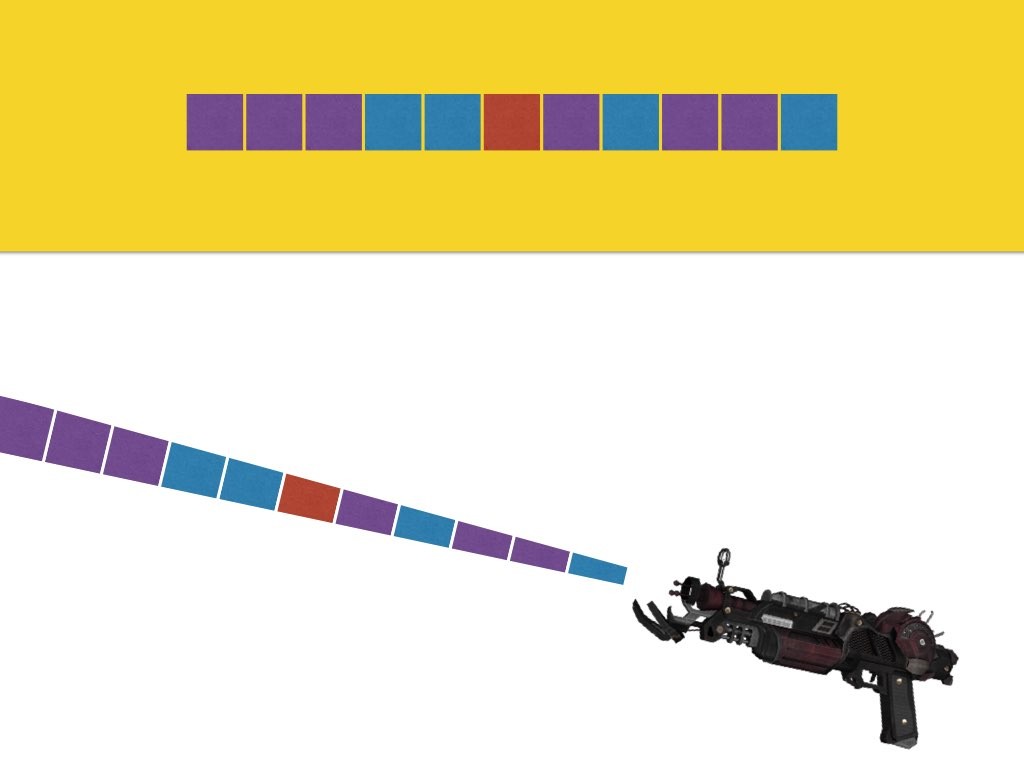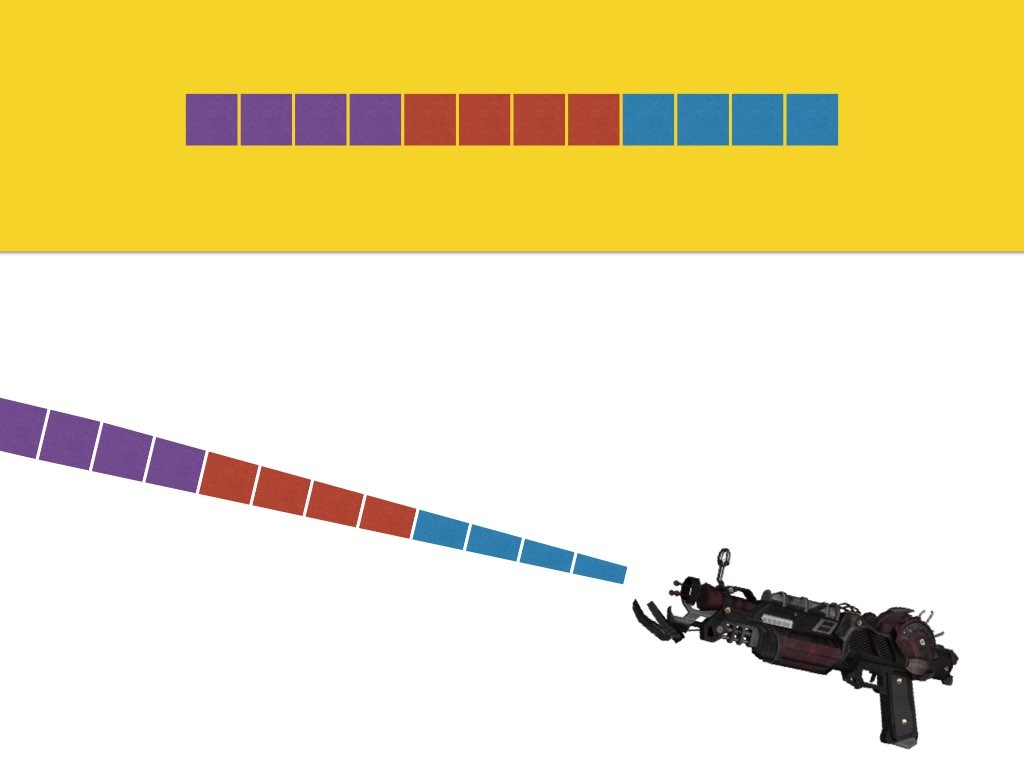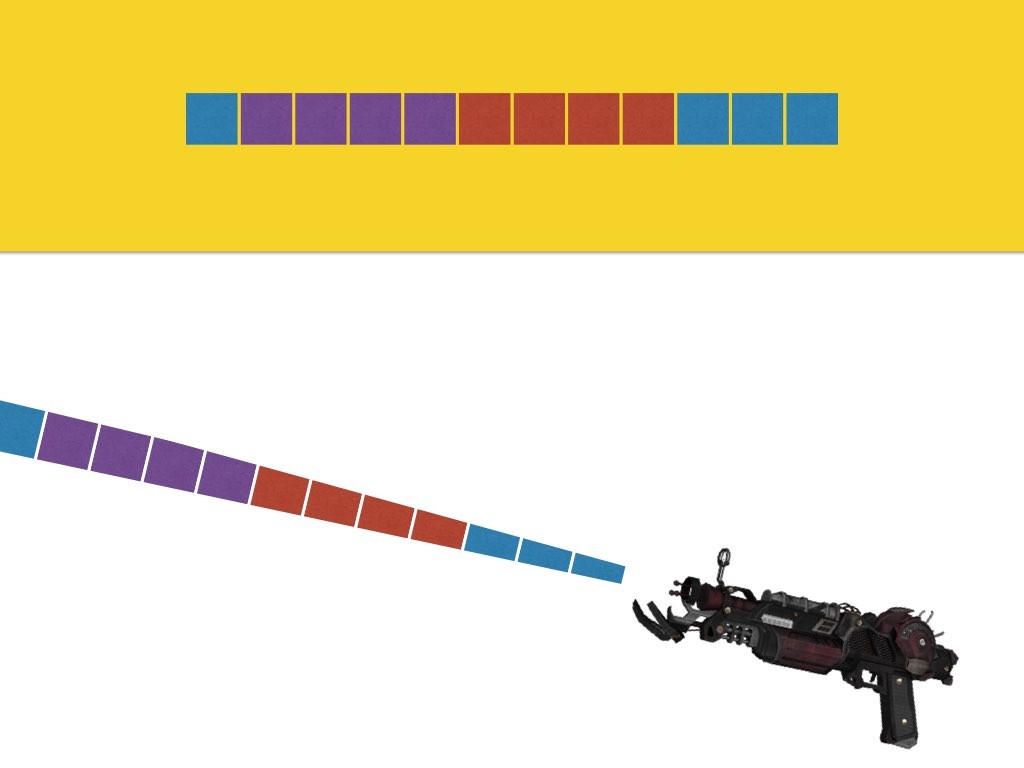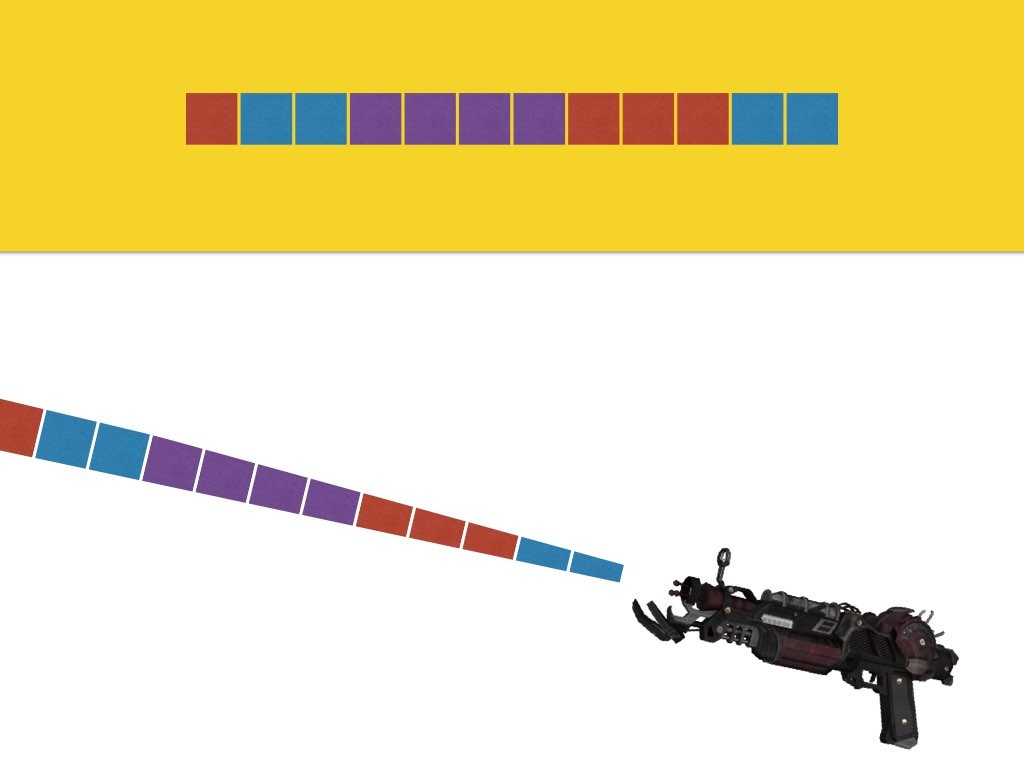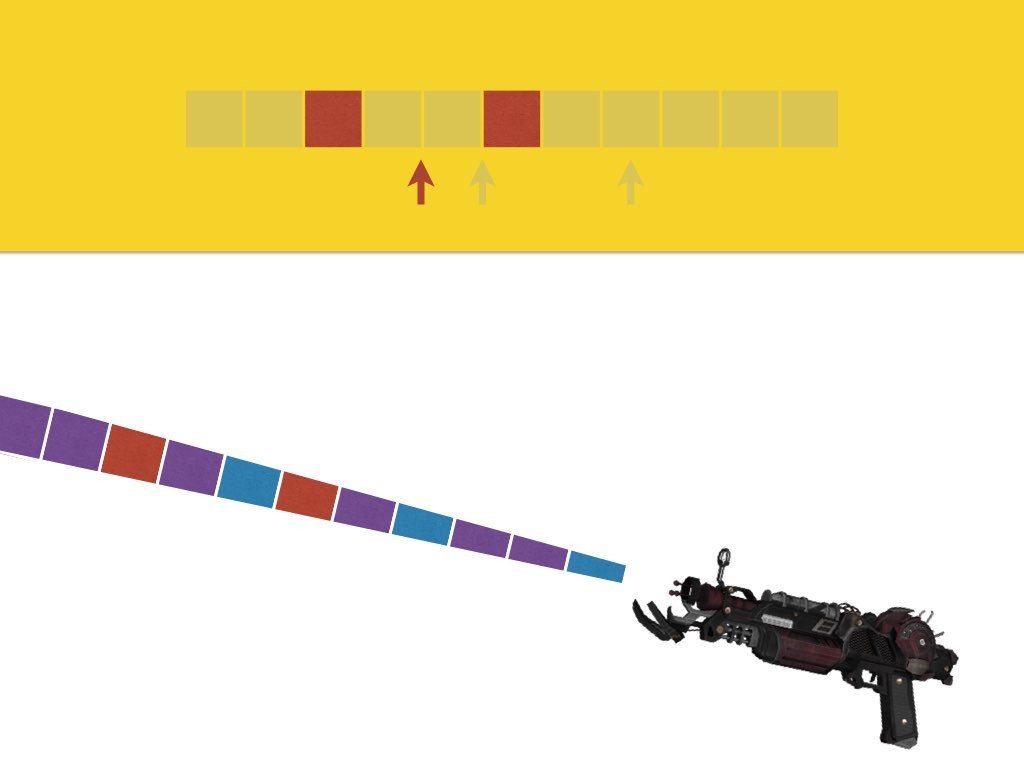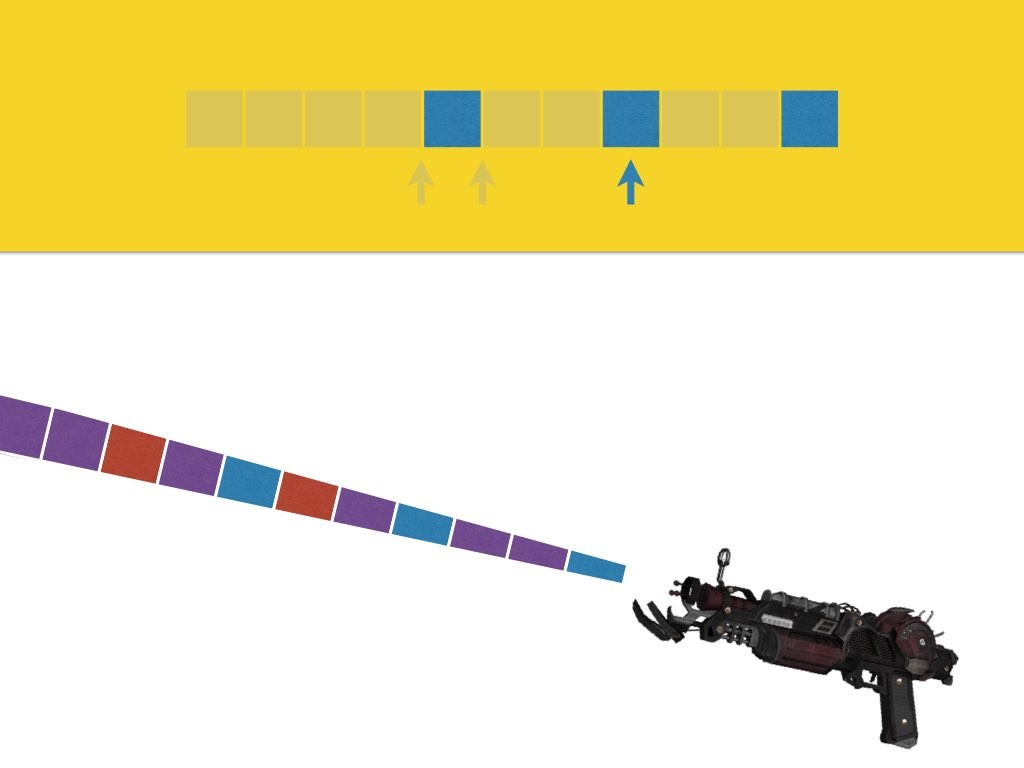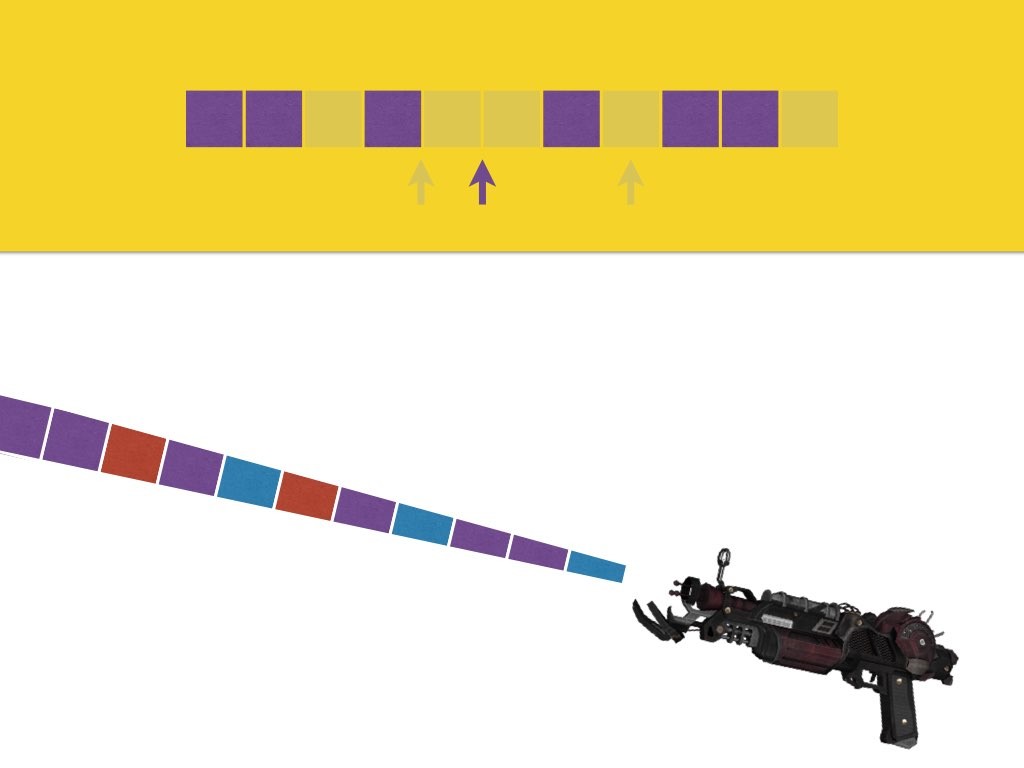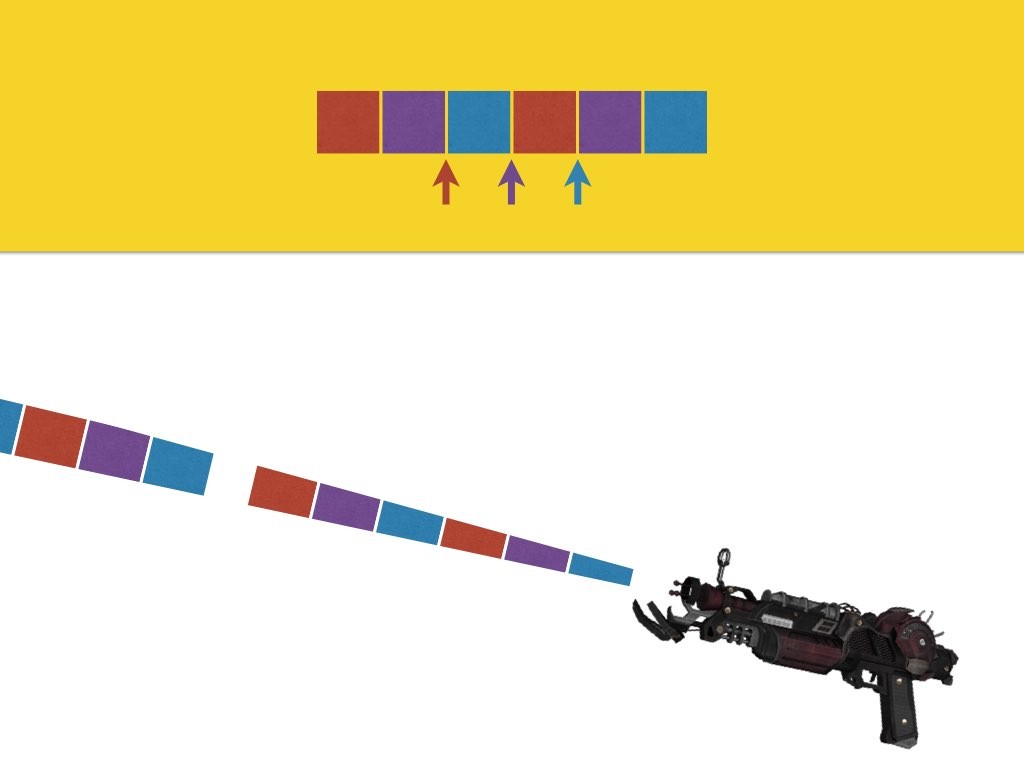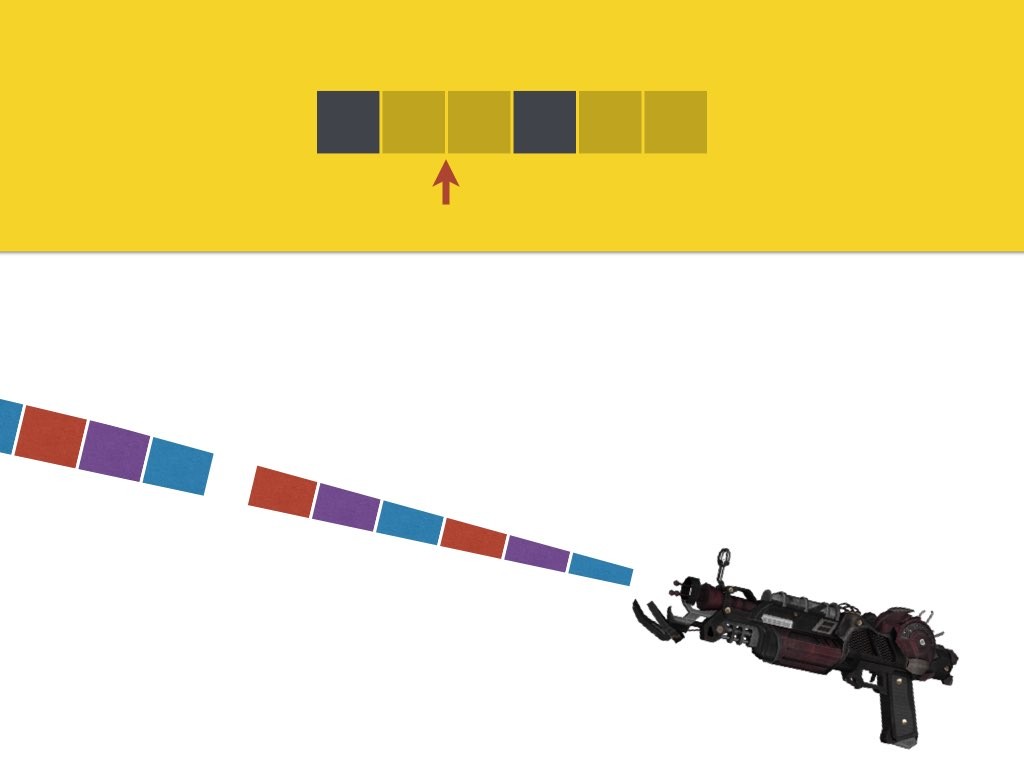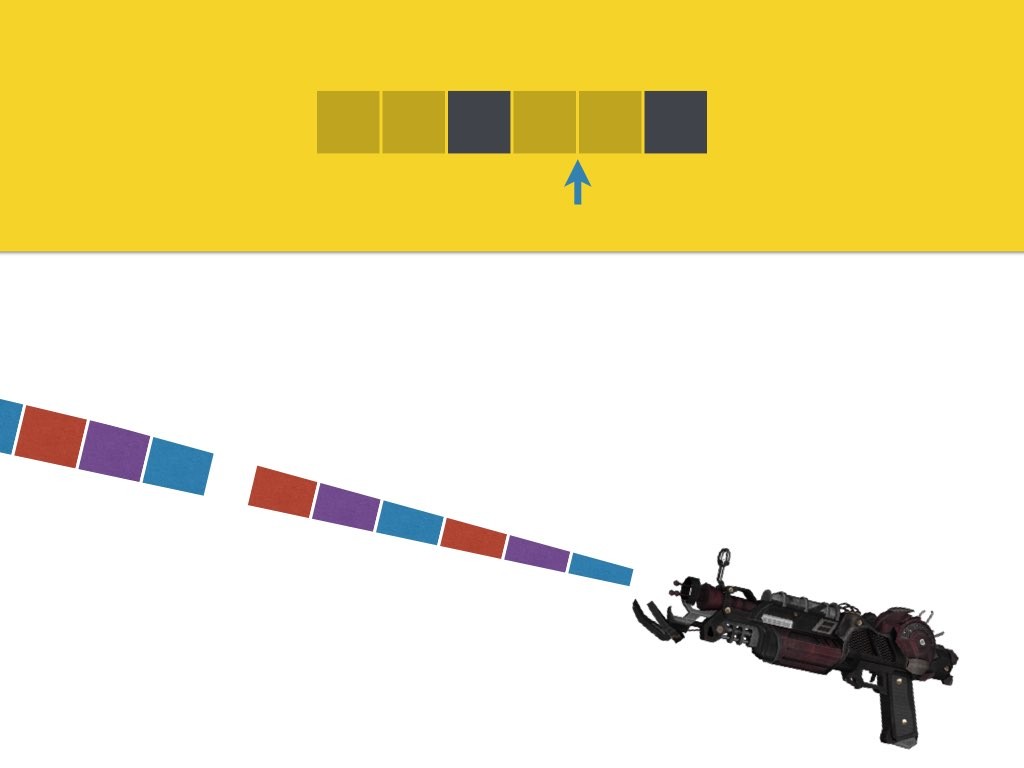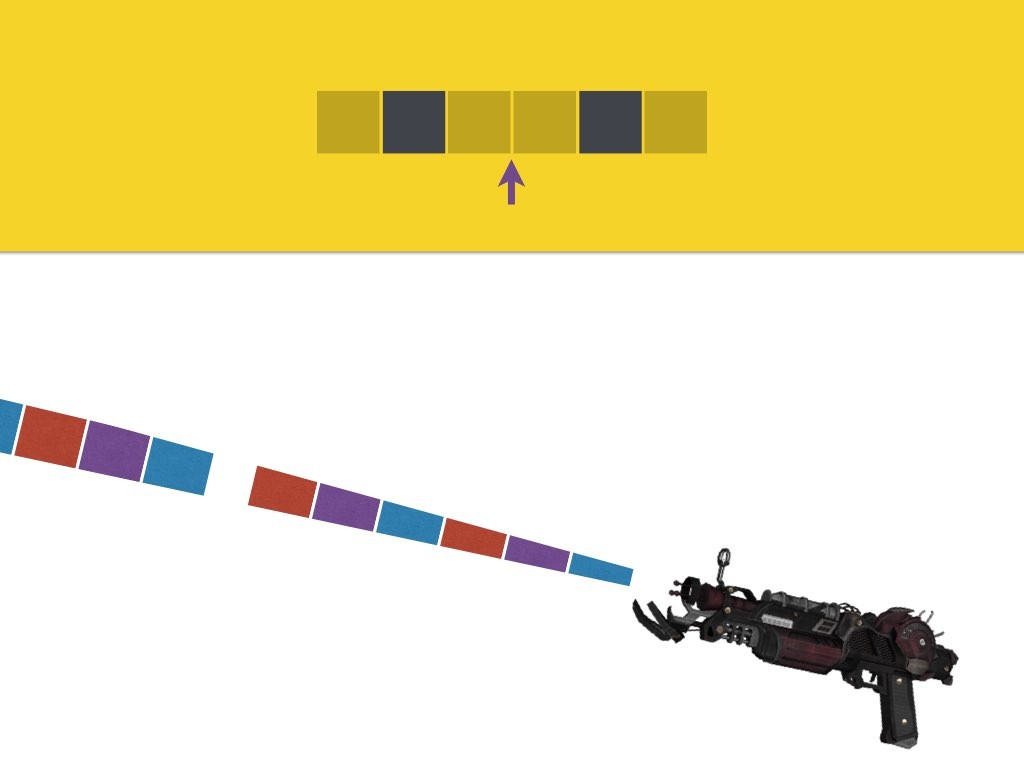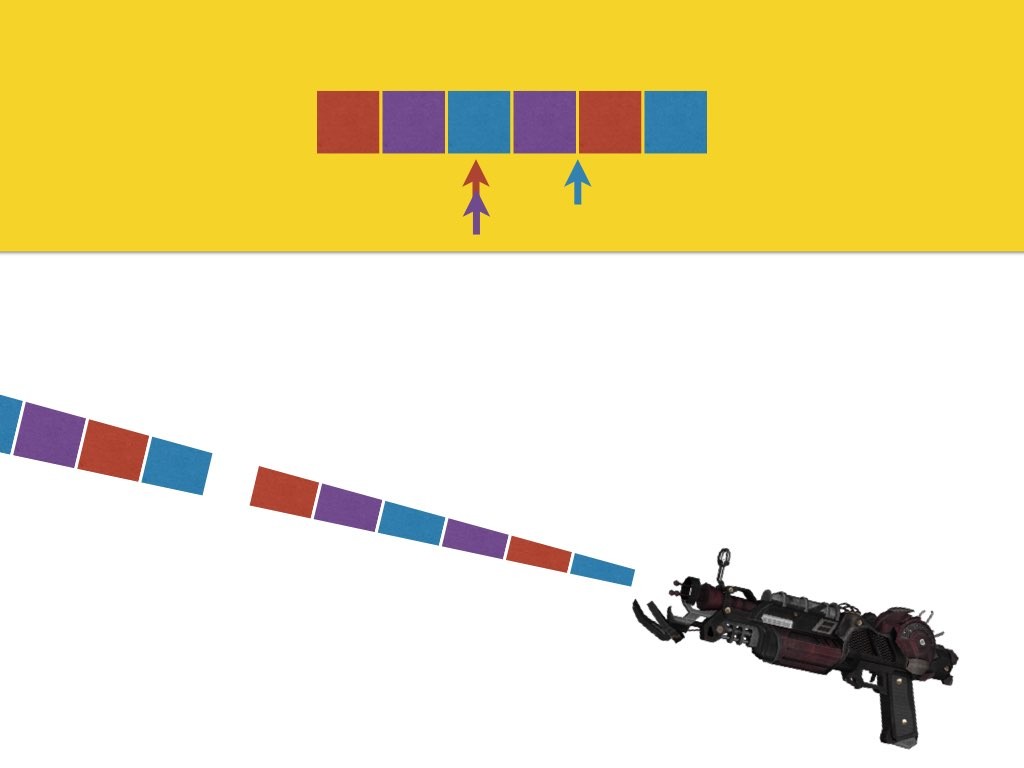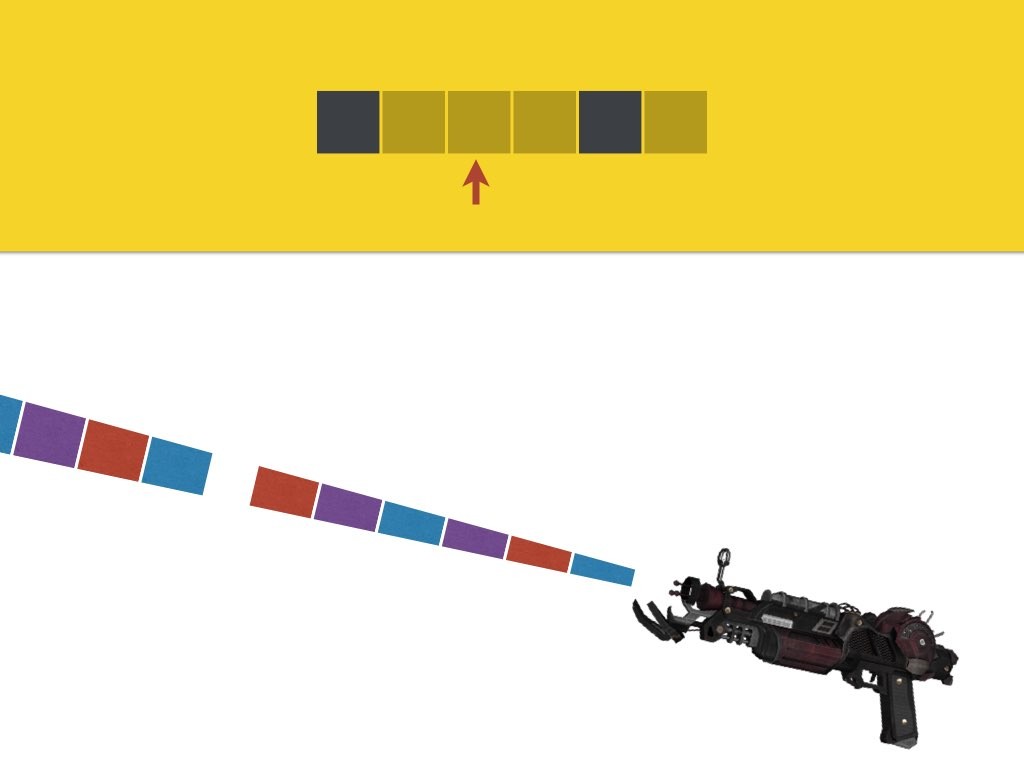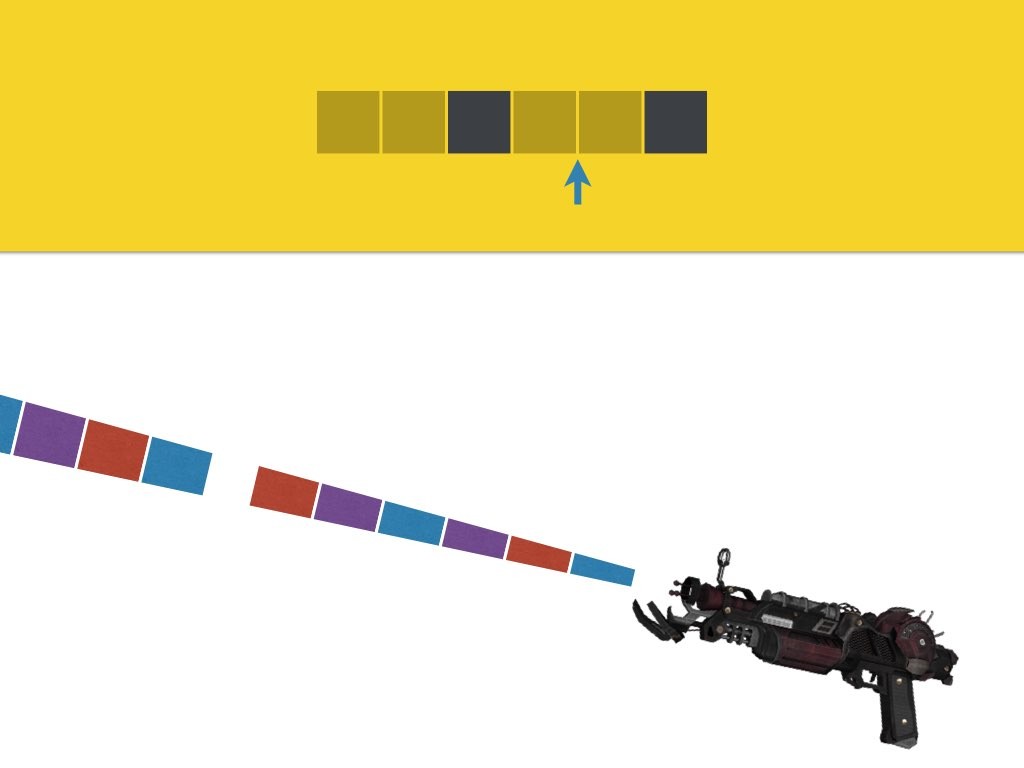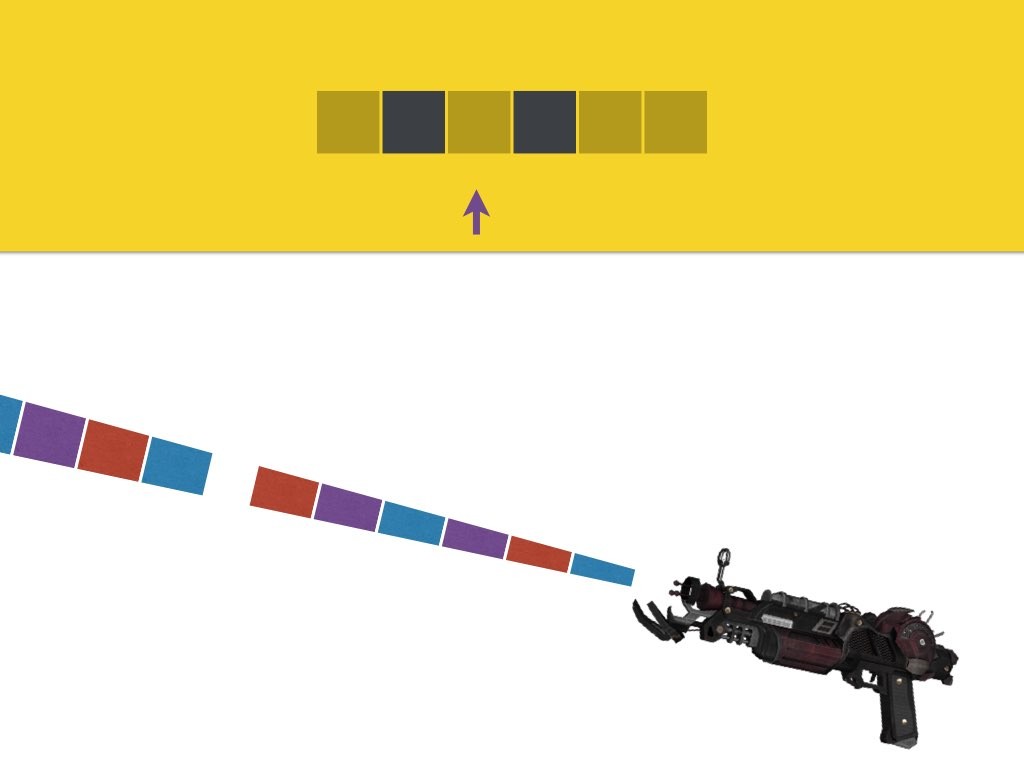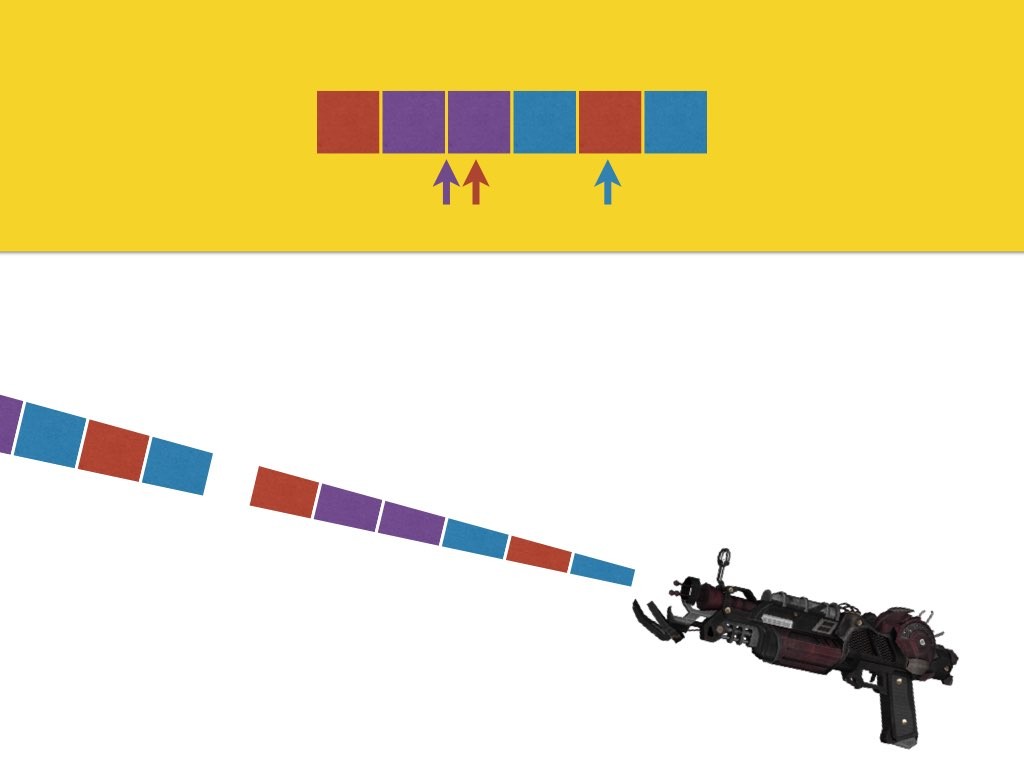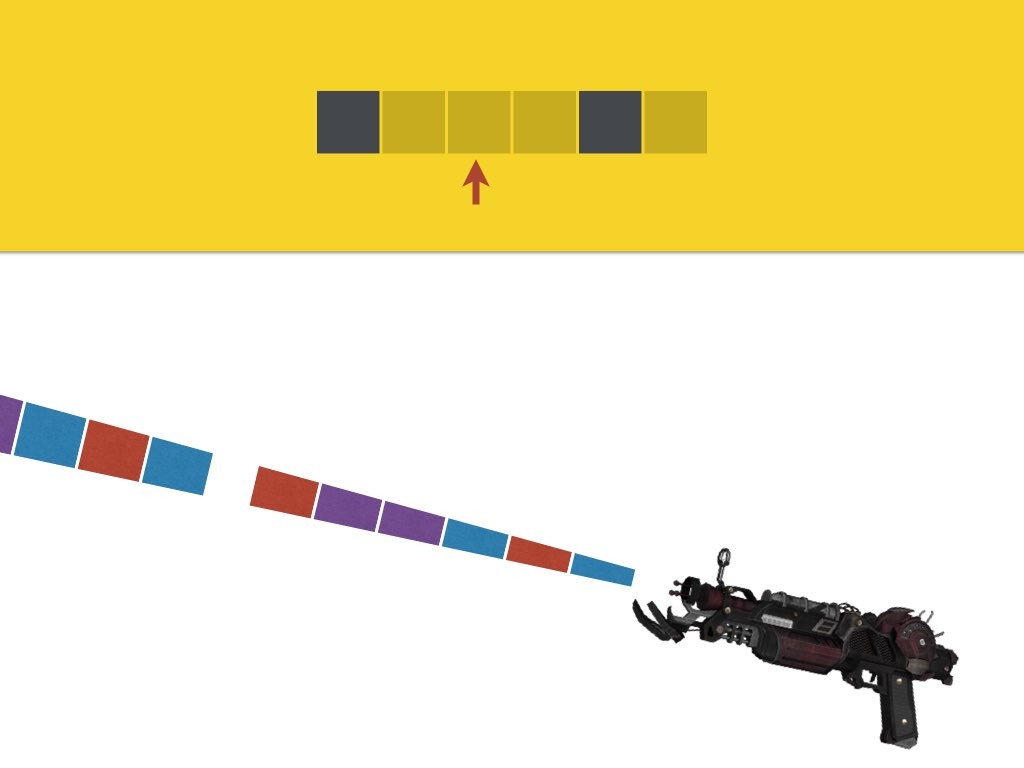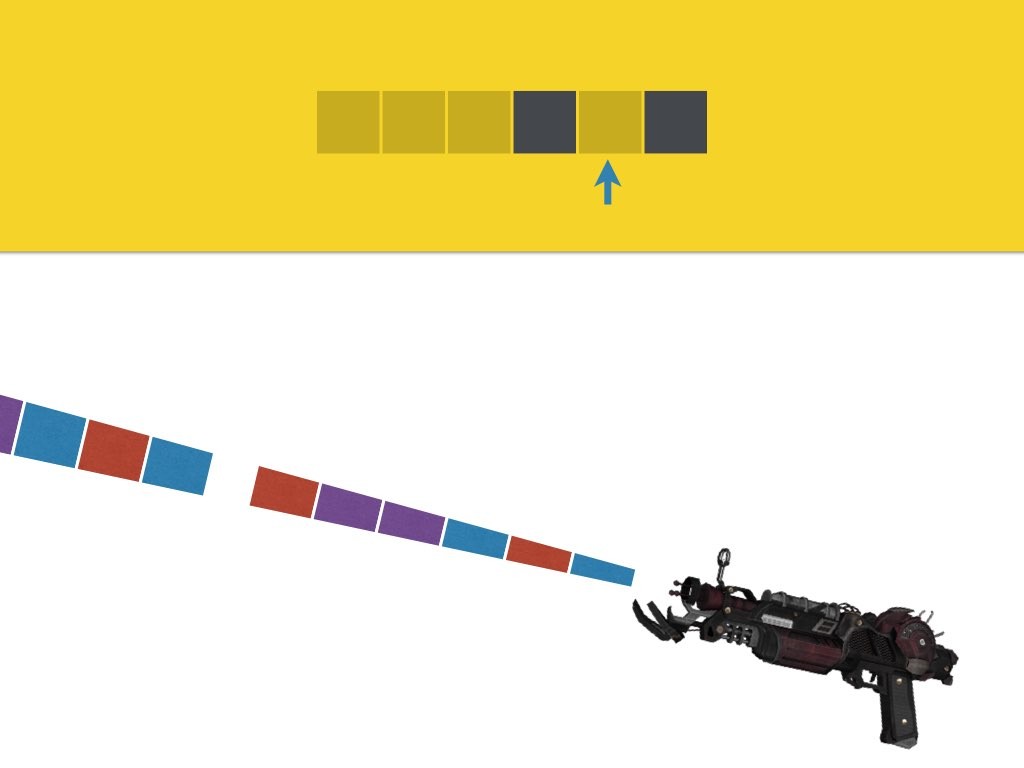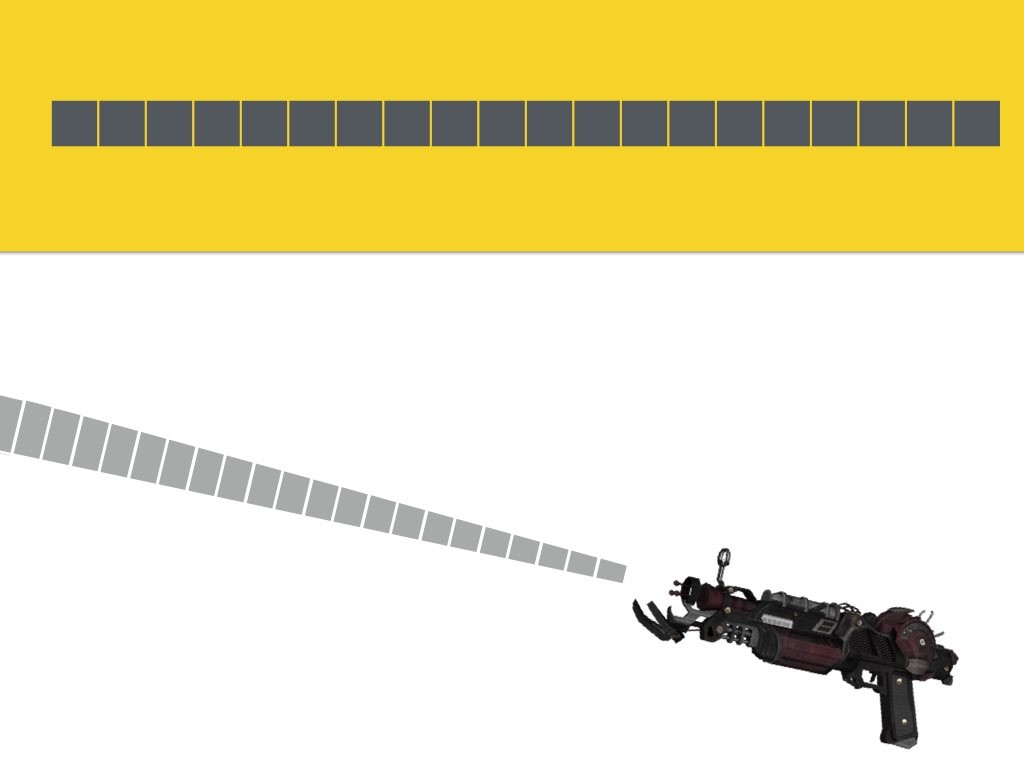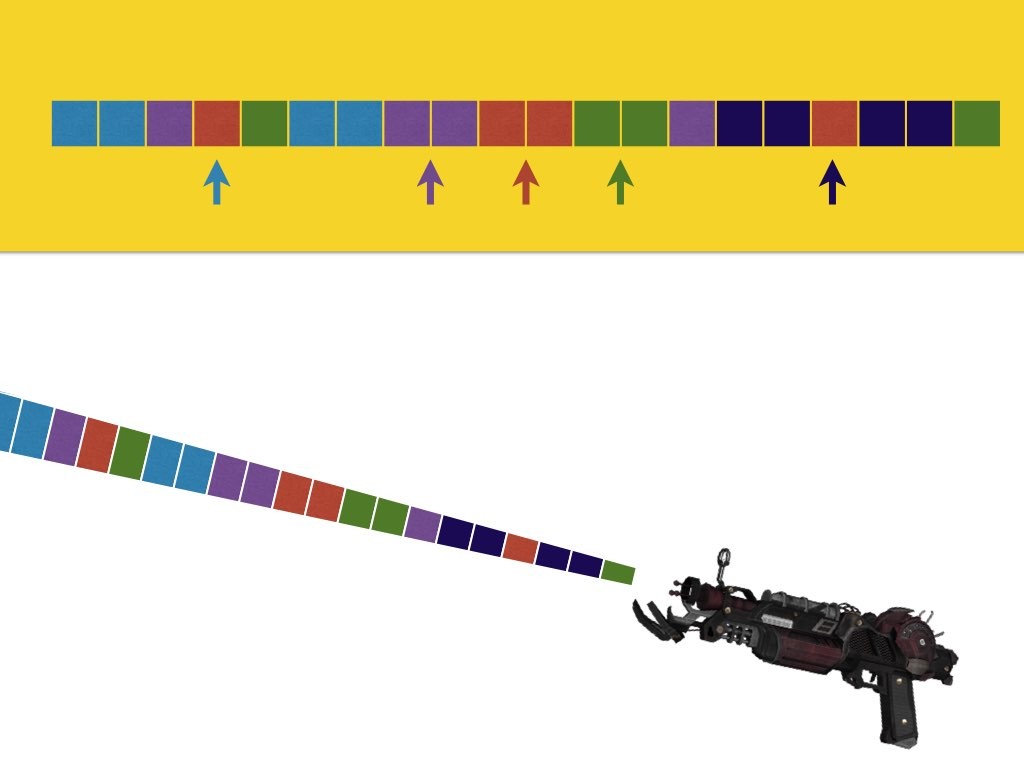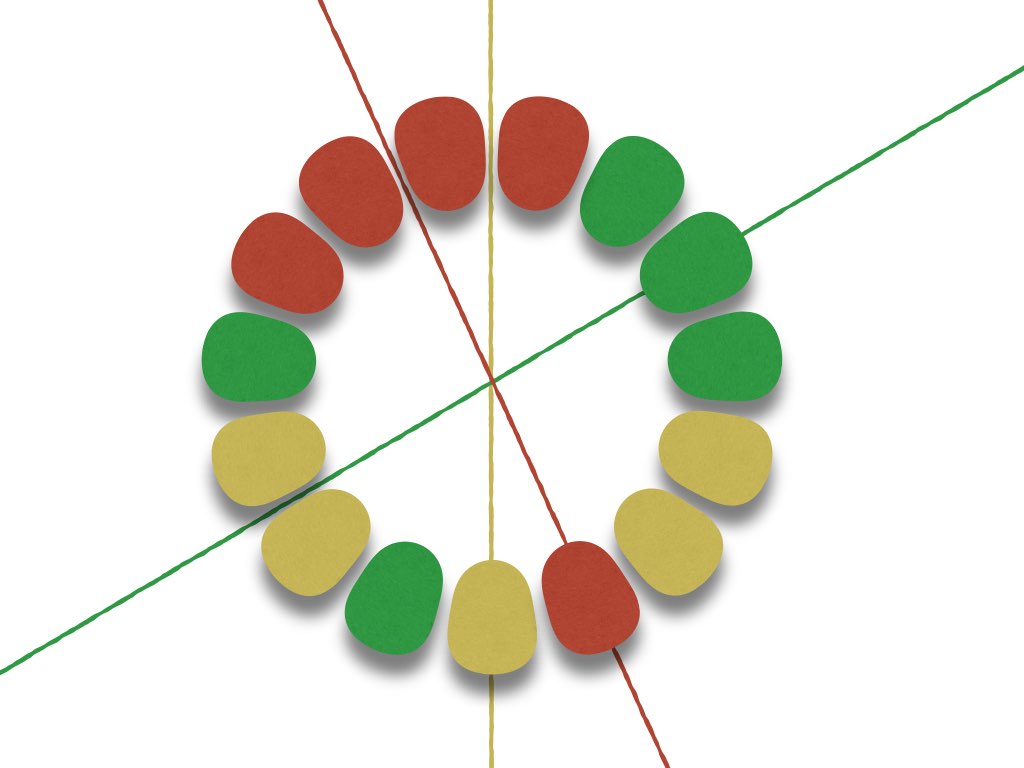Spectral Blaster
(MathPickle, 2017)
Get your students deducing the mysterious rules that need to be satisfied in order to fire their spectral blaster. Until the four rules are discovered students should remain together as a class. Then they should go off to try to solve and explore. Here are the four rules for reference. Do not let your students see this list!
Rule 1: Equality
Rule 2: Different Pattern
Rule 3: Mirror Symmetry
Rule 4: Different Axes
The copyright for the Ray_Gun_Mark_II_model_BOII is from Call of Duty. MathPickle’s use of this image is legitimate as it does not interfere with the selling of the game and is for noncommercial purposes and is a part of my general commentary and critique of computer based games as opposed to board games. Parents need to get their children involved in slow, methodical problem solving. Doing this problem solving in a group rather than looking at a computer screen has social advantages. If there is one thing that parents should keep from Call of Duty and other violent shoot-em-ups – it is the violence. That can be exciting for boys… but try to move it into a slow paced strategic game like Memoir ’44.
Standards for Mathematical Practice
MathPickle puzzle and game designs engage a wide spectrum of student abilities while targeting the following Standards for Mathematical Practice:
MP1 Toughen up!
Students develop grit and resiliency in the face of nasty, thorny problems. It is the most sought after skill for our students.
MP2 Think abstractly!
Students take problems and reformat them mathematically. This is helpful because mathematics lets them use powerful operations like addition.
MP3 Work together!
Students discuss their strategies to collaboratively solve a problem and identify missteps in a failed solution. MathPickle recommends pairing up students for all its puzzles.
MP4 Model reality!
Students create a model that mimics the real world. Discoveries made by manipulating the model often hint at something in the real world.
MP5 Use the right tools!
Students should use the right tools: 0-99 wall charts, graph paper, mathigon.org. etc.
MP6 Be precise!
Students learn to communicate using precise terminology. MathPickle encourages students not only to use the precise terms of others, but to invent and rigorously define their own terms.
MP7 Be observant!
Students learn to identify patterns. This is one of the things that the human brain does very well. We sometimes even identify patterns that don't really exist 😉
MP8 Be lazy!?!
Students learn to seek for shortcuts. Why would you want to add the numbers one through a hundred if you can find an easier way to do it?
Please use MathPickle in your classrooms. If you have improvements to make, please contact me. I'll give you credit and kudos 😉 For a free poster of MathPickle's ideas on elementary math education go here.
